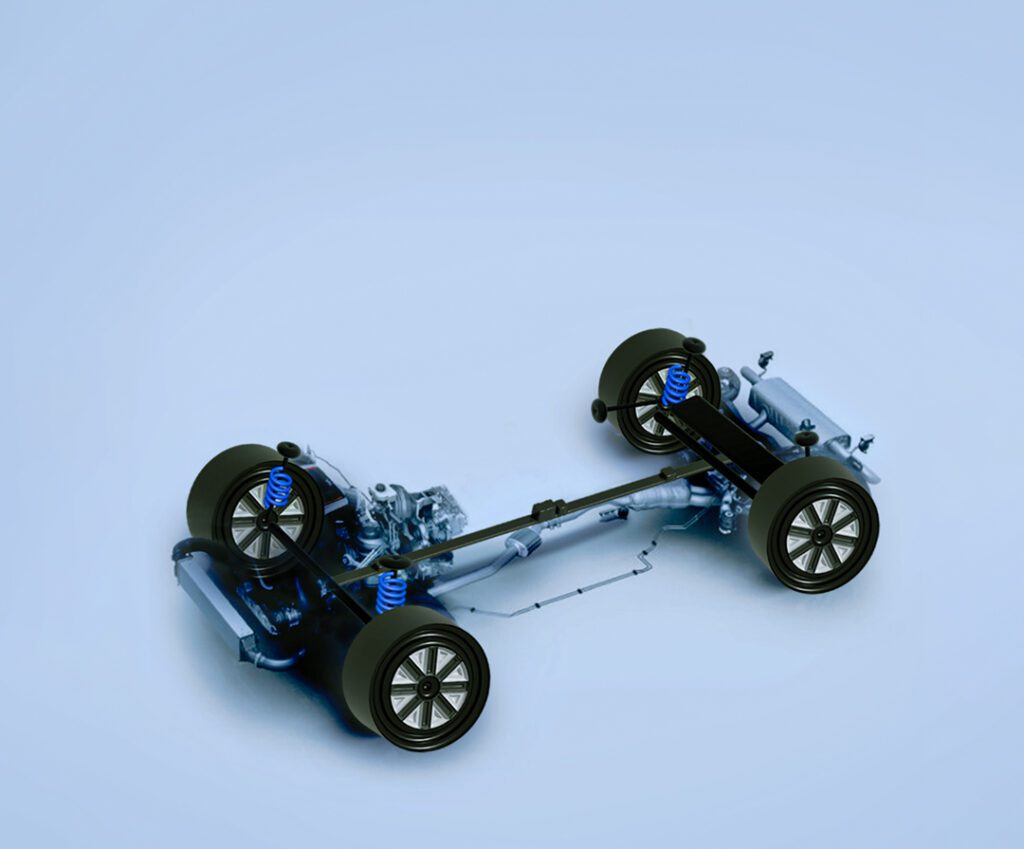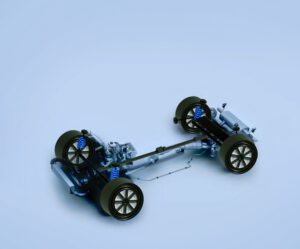When searching for a new car, you will need to decide what make and model makes sense for your budget and lifestyle. You will also have to decide on specifications that are must-haves. One of the specifications you will need to consider is the drivetrain. Gas-powered and electric vehicles are available in all-wheel (AWD), four-wheel (4WD), front-wheel (FWD), and rear-wheel drive (RWD). While the gas cars deliver power through the engine to the wheels, EVs provide power through the electric motors at the wheels.
Picking between AWD, 4WD, FWD, and RWD will depend on your driving habits and where you live. In this article, we break down the difference between each drivetrain so that you can pick the right vehicle:
All-Wheel Drive (AWD)
All-wheel drive sends power from the engine to all four tires all of the time. An AWD system will transfer power to the tires with the most traction. For example, when driving on snowy or wet roads, AWD will provide more traction and perform better than front-wheel drive (FWD) or rear-wheel drive (RWD). AWD offers drivers better handling, grip in slippery conditions, and provides greater traction. AWD is made to be used on roads. Therefore, it is better for drivers who need a vehicle to perform well on roads in different weather conditions.
An AWD vehicle is your best bet to tackle rain, snow, and icy roads. Most SUVs and cars come with AWD or with AWD available packages. Trucks usually come with either four-wheel drive (4WD) or AWD.
Four-Wheel Drive (4WD)
Four-wheel drive is used for off-roading or extremely slippery surfaces, so it is available on off-road style vehicles. 4WD works the best at low speeds to tackle more complicated road conditions, like driving through mud, sand, water, or snow. 4WD systems are not intended for use on normal paved roads. Therefore, you will only find 4WD in vehicles with off-road capabilities.
Front-Wheel Drive (FWD)
FWD delivers the engine’s power to the vehicle’s front wheels. FWD is the more fuel-efficient and cost-effective option available in sedans, SUVs, and crossover SUVs. Cars that have FWD can handle snowy and wet driving conditions. However, AWD is preferred for handling snowy or wet conditions because AWD engages all four tires offering great traction.
Rear-Wheel Drive (RWD)
RWD sends the engine’s power to the rear wheels of the vehicle. RWD can provide more power because it simply pushes the vehicle forward. Therefore, RWD is usually available in sports cars and pickup trucks. Even though RWD are fun to drive, they do not perform well in rain or snow due to poor traction for the wheels.
Choosing the right drivetrain will depend on what you plan to use the vehicle for and where you live. If you live somewhere that experiences all four seasons, consider having an AWD vehicle to handle winter driving conditions. FWD vehicles can also handle winter conditions and are more fuel-efficient and cost-effective than AWD vehicles. If you are looking for a vehicle to take off-roading and backcountry adventures, then a 4WD vehicle will help you through whatever situation you find yourself in. Lastly, if you are looking for a thrill of power and speed, you can get yourself a sports car with RWD.
VINN Tip: Remember that it is essential to have snow tires on your vehicle for all winter driving conditions.
At VINN, we work directly with you to guide you through the process of finding a new car. Our vehicle experts will work with you to ensure that you get the best value for the right car, and you can also browse our inventory.
Happy driving! 🚘 Tell us about your favourite vehicles or fun car facts by tagging us on Instagram @vinncanada or Twitter @vinnauto.








